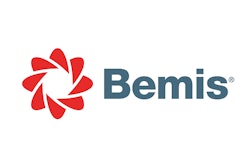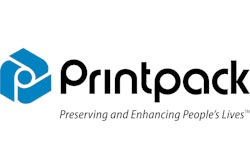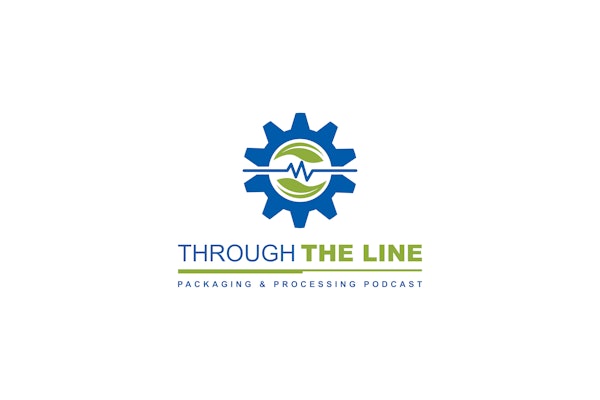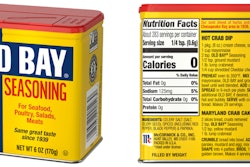The Flexible Packaging Assn.'s environmental summit in Clearwater Beach, FL, in January brought together about 50 leaders of the rotogravure and flexographic package printing industry. They sat around a U-shaped table, listening to warnings of "if, how and where" the next shoe from the Environmental Protection Agency would drop. There weren't any packagers parked in seats, of course. And that was too bad. Because the trials and tribulations that converters are going through, and will go through in the future, will have a major impact on what kind of packaging will be available, and at what cost. Those trials and tribulations include EPA programs such as the Design for the Environment (DfE), the Common Sense Initiative (CSI) and the air emissions MACT (Maximum Achievable Control Technology) standards for both printing and coating. For example, Tom Dunn, director of development for Printpack, Inc. (Atlanta, GA), wondered aloud whether the DfE program would result in converters having to sell "lower quality printing in return for giving communities better lifestyles." Further, Dunn, like Bob Hawkins, a vice president of technology for Bryce Corp. (Memphis, TN), noted that, at the start of both DfE and CSI, EPA thought it might be a good idea to ban solvents from inks. But the agency has apparently erased that environmental idea. At least one agency official participating in the summit maintained that no EPA regulation would go forward without serious consideration of its impact on the users of packaging. Dan Brown, the EPA environmental engineer in charge of the just-starting rulemaking on a MACT standard for packaging coatings, argued that the agency "goes through tremendous efforts to make sure that product quality is maintained." The printing MACT was published on May 30, 1996. Printers have until May 30, 1999, to comply. MACTs are air emissions standards that set limits on how much of any of the 189 hazardous air pollutants (HAPs) the EPA has designated-such as toluene, MEK, some glycol ethers, methanol-can be emitted by "major sources" within a particular industry. There are two basic options. Converters will either radically reduce emissions by substituting non-HAP solvents for HAP solvents. Or they will invest in oxidizers to control HAP emissions. Oxidizers can cost between $500ꯠ to $2 million, according to Howard Hofmeister, associate director of environmental affairs at Curwood, Inc. (Oshkosh, WI). He said it is a "logical conclusion" that converters who go that latter route would pass those control costs on to packaging customers. The EPA is also working on a coatings MACT. It is possible that some converters will be able to get their coating operations covered under the printing MACT. Others won't. That second group, then, would be affected by the coatings MACT, scheduled to be published in the year 2000 and become effective within three years after that date. Dan Brown, the EPA official working on the coatings MACT, said surveys are being sent to industry to find out what kind of coatings are being used. When asked whether the coatings MACT will have more of an impact on packaging performance than the printing MACT, Hofmeister replied, "The classic answer is 'yes.'" But he added that inks, too, have performance characteristics. At the same time the coatings MACT is being developed, the EPA is beginning a parallel but separate process. This one is examining whether there needs to be an EPA regulation limiting emissions from volatile organic compounds-as distinguished from HAPs-found in coatings used by converters. According to Dan Brown, the EPA has the option of issuing a federal regulation or updating a pre-existing, non-regulatory Control Techniques Guideline. The states may use the CTG as the basis of regulations in non-attainment areas, which are areas that have high ozone and particulate matter levels. "No decision has been made yet," reported Brown, "but at this point in time, a CTG seems more likely." The problem for flexo and gravure printers is that many of them got out of methylethyl ketone and toluene when they were listed as HAPs. But the substitutes they chose were sometimes listed as VOCs (volatile organic compounds). Common sense not common? As opposed to the regulatory MACTs, the Common Sense Initiative, on the other hand, is aimed at prompting voluntary action in six specific industries, one of which is printing. The effort started in January 1995. In general, CSI is one of the numerous Clinton regulatory reform programs. CSI's particular objective is to look at all the emissions from plants on a sector-by-sector basis and try to come up with a framework for emissions reduction rather than subjecting those plants to general air, water, solid waste and other regulations that all manufacturing facilities have to abide by. Bob Hawkins of Bryce sits on the CSI printing subcommittee. He gave EPA Administrator Carol Browner, whose "baby" the CSI has become, a lot of credit. "She had the nerve to say 'Let's see if there is a better way,'" he explained. "Steve Herman has also listened and heard our complaints," Hawkins continued. "Some of the things we have said have been taken into account by the EPA when it does new source reviews. We're satisfied with that." Herman is assistant administrator for enforcement and compliance assurance. That's another way of saying he's the agency's chief cop. The EPA does a new source review (NSR) whenever a production facility (printing industry or otherwise) is expanded, or new emissions-producing equipment is installed. In the fall of 1996, the EPA issued revised guidelines on the NSR. Many industry groups such as the FPA welcomed the modifications. While Herman may have used some of what he heard in the CSI printing subcommittee in the revised NSR guidelines, there is no guarantee that any final CSI printing program-if in fact there is one-will turn out so favorably. So far, there are two proposals on the table. One has to do with a printer education program. The other involves development of what is being called a plant-wide applicability limit (PAL). Under a PAL, a converter would negotiate a cap on the amount of air emissions it could emit each year for five years. That cap would ostensibly be set above the current emission level so that when the company wanted to add new equipment, it would not have to come back and ask the EPA's permission. That is important because in some EPA regions it can take 14 months to get the green light for a new press, said Mark Wygonik, the FPA director of technology and regulatory affairs. Inks under scrutiny Design for the Environment (DfE) is a sister program to CSI. Stephanie Bergman, the EPA official handling this program, has worked with three printing sub-sectors: screen, lithography and flexo. In flexo, there have been about 10 wide-web demonstration sites in the U.S. and Germany that have analyzed water-based, solvent-based, and ultraviolet-cured inks. The emphasis is on finding the most environmentally appropriate inks that yield the best performance on wide-web presses for three substrates: snack food laminations, retail merchandise bags and frozen food bags. The demonstration sites were scheduled to finish their work by mid-February. The data from those demonstrations will be crunched by Western Michigan University. When that college completes its analysis, the data will go to the University of Tennessee at Knoxville, which will put together some sort of ranking order that can be used in a Cleaner Technology Substitutes Assessment, which will be put out by the EPA. Assessment in 24 months Printpack's Dunn said that would be finished sometime in the next 24 months. That assessment will not be a regulatory document. But it could be used as the basis for regulations, should the EPA so desire. "This could be the groundwork for an EPA effort to mandate solvent-less printing," Dunn hypothesized. Bergman was not at the FPA summit. In a later interview, she admitted that it is possible some office at EPA would take the substitutes assessment and try to convert it into a regulatory action. "We can't control who picks it up," she said. "But we are not in cahoots with anyone here." Dunn was somewhat cynical about some of what has happened. He said that the technical committee "did not have a lot of latitude" in terms of the input/output specifications that were used in the 10 demonstrations. Moreover, he complained that both of the colleges were chosen for political reasons over more suitable candidates, those schools with more experience in this research area. He named Clemson University's graphic communications school, which has a converting lab with a wide-web flexo press. Western Michigan, on the other hand, has only a narrow web. And although the DfE/flexo technical committee did a lot of work starting in November 1995, and had numerous communications with the EPA, the agency has dropped down a cone of silence since the input/output specifications went to Western Michigan. Dunn said the DfE steering committee, on which Mark Wygonik sits, "is just as much in the dark." Bergman admitted that industry is due an update. Someone asked Wygonik if the industry "could pull the plug on the the substitutes assessment if we don't like it." He answered, "Probably not. But if we can raise real world concerns, we can get it changed." Wygonik raised the possibility that the EPA could go directly to packagers and "put some pressure" on them to demand "green printing" from suppliers. He noted that the agency had considered early on having packagers involved in the DfE program, but never followed through. Bergman added that initial thoughts about putting packagers on the flexo steering committee "just fell off the plate." She explained that she has no intention of going over the heads of printers to their customers. But others at EPA may have that in mind. "Some folks around here think that would help to drive change, to educate consumers," she said.


























